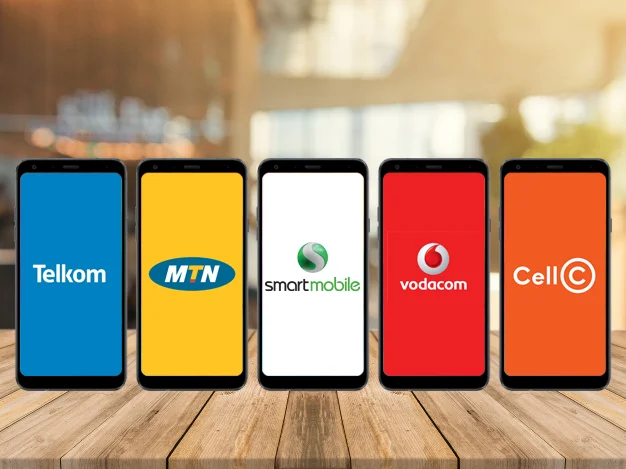Mobile phones and data are essential in South Africa, but are you paying more than you need to? With mobile costs creeping up, many South Africans are unknowingly overspending on contracts, data plans, or shiny new devices they don’t fully utilize. The problem is real: high data prices and complex plans often trap consumers into paying for services they don’t need, draining budgets that could be better spent elsewhere.
This blog is here to help. We’ll guide you through practical, cost-effective ways to spend smarter on cell phones and data, from choosing the right plan to avoiding hidden costs. Expect a clear comparison of prepaid versus contract options, budget-friendly data hacks, and tips for buying phones without breaking the bank. By the end, you’ll have the tools to slash your mobile expenses while staying connected.
Current State of Mobile Costs in South Africa
South Africa’s mobile market is one of the most expensive in Africa. According to the Independent Communications Authority of South Africa (ICASA) and MyBroadband’s 2024 reports, the average cost for 1GB of mobile data ranges from R38 to R60, significantly higher than in countries like Nigeria or Kenya, where 1GB averages R15–R25. Despite pressure from the Competition Commission, which forced price cuts by major operators like MTN and Vodacom, telcos still benefit from consumers’ lack of awareness about cheaper alternatives. For instance, smaller providers like Telkom and MVNOs (Mobile Virtual Network Operators) often offer better rates, but many users stick with bigger brands out of habit.
The impact is stark: low-income households, who rely heavily on mobile data for internet access, spend up to 10% of their income on connectivity, according to Research ICT Africa. This makes it critical to understand your options and shop smartly to avoid overpaying.
Understanding Your Needs Before Spending
Before you sign a contract or buy a new phone, take a step back to assess your actual needs. Many South Africans overspend because they choose plans or devices that exceed their usage. For example, do you really need 20GB of data monthly if you’re mostly on Wi-Fi at home or work? Or are you upgrading your phone every year when your current device still works fine?
Start by analyzing your average monthly data and voice usage. Apps like MyDataManager or GlassWire can track how much data you use on apps like WhatsApp, YouTube, or social media. Next, consider your phone upgrade habits. If you’re replacing your device every 12 months, you’re likely spending thousands of rands unnecessarily—midrange phones now last 3–4 years with proper care. By understanding your needs, you can avoid flashy plans or devices that don’t align with your lifestyle.
Pro tip: Review your last three months’ usage via your network’s app (e.g., MyMTN, MyVodacom) or the built-in application on your device to get a clear picture of your habits.
Prepaid vs Contract: Which Saves More?
One of the biggest decisions you’ll make is choosing between prepaid and contract plans. Each has its merits, but the total cost of ownership (TCO) can vary dramatically. Let’s break it down:
- Contract Example: A R500/month contract over 24 months costs R12,000, often including a midrange phone (e.g., Samsung A34) and ~10GB of data monthly. However, out-of-bundle charges (e.g., R1/MB) can add hundreds of rands if you exceed your allocation.
- Prepaid Example: Buying a R3,000 phone outright (e.g., Xiaomi Redmi 13C) and spending R200/month on data and airtime (e.g., 2GB + 100 minutes) costs R7,800 over 24 months—a 35% savings.
Here’s a quick comparison:
| Option | Pros | Cons |
| Prepaid | Flexibility, no credit checks, cheaper long-term, easy to switch providers | Requires upfront phone purchase, manual top-ups can be inconvenient |
| Contract | Convenient, new phone included, bundled perks (e.g., free streaming) | Locked-in for 24 months, higher TCO, risk of out-of-bundle charges |
A smart hybrid approach is the “Prepaid + Wi-Fi” model, ideal for urban users with access to Wi-Fi at home, work, or public hotspots (e.g., Tshwane Free Wi-Fi). By relying on Wi-Fi for heavy tasks like streaming and using prepaid bundles for on-the-go needs, you can save up to 35% monthly, according to MyBroadband’s 2024 cost analysis. Contracts make sense if you need a high-end phone and consistent data, but prepaid is often cheaper for budget-conscious users who can manage their usage.
Choosing the Right Network Provider
South Africa has four major mobile network operators—MTN, Vodacom, Telkom, and Cell C—each with strengths and weaknesses. Here’s how they stack up based on MyBroadband’s Q2 2024 Mobile Network Quality Report and Opensignal’s August 2024 Mobile Network Experience Report:
- MTN: Best overall network quality (download speed: 83.08 Mbps, Network Quality Score: 9.87). Competitive data prices (e.g., 2GB for R159), but rural coverage lags behind Vodacom. Ideal for urban users needing speed.
- Vodacom: Tops 5G speeds and coverage (5G download: ~200 Mbps), with the widest rural reach. Slightly pricier (2GB for R149), but offers perks like VodaBucks rewards. Great for travelers and rural residents.
- Telkom: Cheapest data (2GB for R99, plus 2GB night data). Strong urban coverage but limited in rural areas. Best for budget-conscious users in cities.
- Cell C: Improved significantly (download speed: 54.50 Mbps), with competitive pricing (2GB for R175). Relies on MTN/Vodacom roaming, so coverage depends on location. Good for video streaming (top Video Experience score).
Tip: Use provider coverage maps (available on MTN, Vodacom, or Telkom websites) or crowdsourced reviews on platforms like HelloPeter to check signal strength in your area. For example, Telkom’s low rates are less valuable if you live in a rural area with poor coverage.
Hacks to Save More on Data and Airtime
Stretching your data and airtime further requires a few smart strategies. Here are proven hacks to cut costs:
- Choose Data Bundles Over Pay-As-You-Go: Out-of-bundle rates can be as high as R1/MB (R1,000/GB), while bundles cost R0.02–R0.09/MB. For example, MTN’s 1GB weekly bundle is R49 via the MyMTN app, saving 90% compared to out-of-bundle rates.
- Use Zero-Rated Services: Many providers offer free access to apps like WhatsApp or Facebook Flex. Cell C’s WhatsApp bundles, for instance, cost R10 for 100MB, perfect for messaging-heavy users.
- Wi-Fi Offloading: Leverage public Wi-Fi at malls, cafes, or municipal hotspots like Tshwane Free Wi-Fi (up to 500MB/day in Pretoria). Use a VPN (e.g., NordVPN, ~R50/month) to stay secure on public networks. At home, consider Vodacom’s LTE plans (e.g., 20GB for R299) for reliable Wi-Fi.
- Maximize Rewards Programs: Vodacom VodaBucks offers up to 20% back on recharges, redeemable for data or airtime. MTN Rewards provides similar discounts, like 1GB for R49 via the MyMTN app. Check your provider’s app for deals.
- Avoid Micro-Topups: Frequent R20–R50 top-ups lead to higher per-GB costs. Instead, buy monthly bundles (e.g., Telkom’s 2GB for R99) for better value.
Combining Wi-Fi offloading with zero-rated services and planned bundles can cut your data costs by 40%, especially in urban areas.
Buying Phones Smartly
Phones are a major expense, but you don’t need to splurge to stay connected. Here’s how to buy smartly:
- New vs Used vs Refurbished: A new Samsung A14 costs R3,999, while a certified refurbished model from Takealot or Everyshop is around R2,200—a 45% savings. Refurbished phones from trusted platforms come with warranties (e.g., 6–12 months) and are rigorously tested. Used phones from private sellers are riskier but can be cheaper (e.g., R1,800 on Gumtree).
- Avoid Flagships Unless Necessary: A flagship like the iPhone 16 (~R20,000) is overkill for most users. Midrange phones under R4,000 (e.g., Xiaomi Redmi 13C, Oppo A18) offer 80% of flagship functionality, including decent cameras, 4G/5G support, and 3–4 years of software updates.
- Future-Proof Your Purchase: Choose phones with 4G/5G compatibility and at least 4GB RAM for longevity. Brands like Samsung and Xiaomi provide longer software support (up to 4 years), ensuring your device stays relevant.
Pro tip: Check trade-in programs at retailers like Vodacom or MTN to offset the cost of a new phone by trading in your old device.
Budgeting Tools and Apps to Help Track & Save
Managing your mobile spending is easier with the right tools. Here are some apps to keep you on track:
- Provider Apps: MyMTN, MyVodacom, and Telkom’s Mobile App let you monitor data, buy bundles, and access rewards. For example, MyMTN offers a 1GB weekly bundle for R49, exclusive to app users.
- Data Monitoring Apps: MyDataManager and GlassWire track usage per app, alerting you to data-hungry apps like YouTube. Set monthly caps to avoid overspending.
- Financial Apps: MTN MoMo or 22Seven help budget your mobile expenses alongside other costs, with alerts for overspending.
- Built-in Programs: Enable data usage alerts in your phone’s settings (Android/iOS) to stay within your budget.
Final Recommendations & Checklist
To spend smarter on cell phones and data, follow these best practices:
- Analyze your needs: Use apps to track data/voice usage and avoid overbuying.
- Choose prepaid unless contracts save more: Compare TCO before signing.
- Leverage bundles and rewards: Buy monthly bundles and use VodaBucks/MTN Rewards for discounts.
- Use Wi-Fi strategically: Offload data to public or home Wi-Fi with a VPN for security.
- Buy midrange or refurbished phones: Opt for devices under R4,000 with 4G/5G support.
In a country where mobile data costs eat into tight budgets, spending smartly on cell phones and data is a game-changer. By understanding your needs, choosing the right provider, leveraging data-saving hacks, and buying phones wisely, you can save thousands of rands annually without sacrificing connectivity. Take a moment this month to audit your current plan—check your usage, compare providers, and explore rewards programs.


